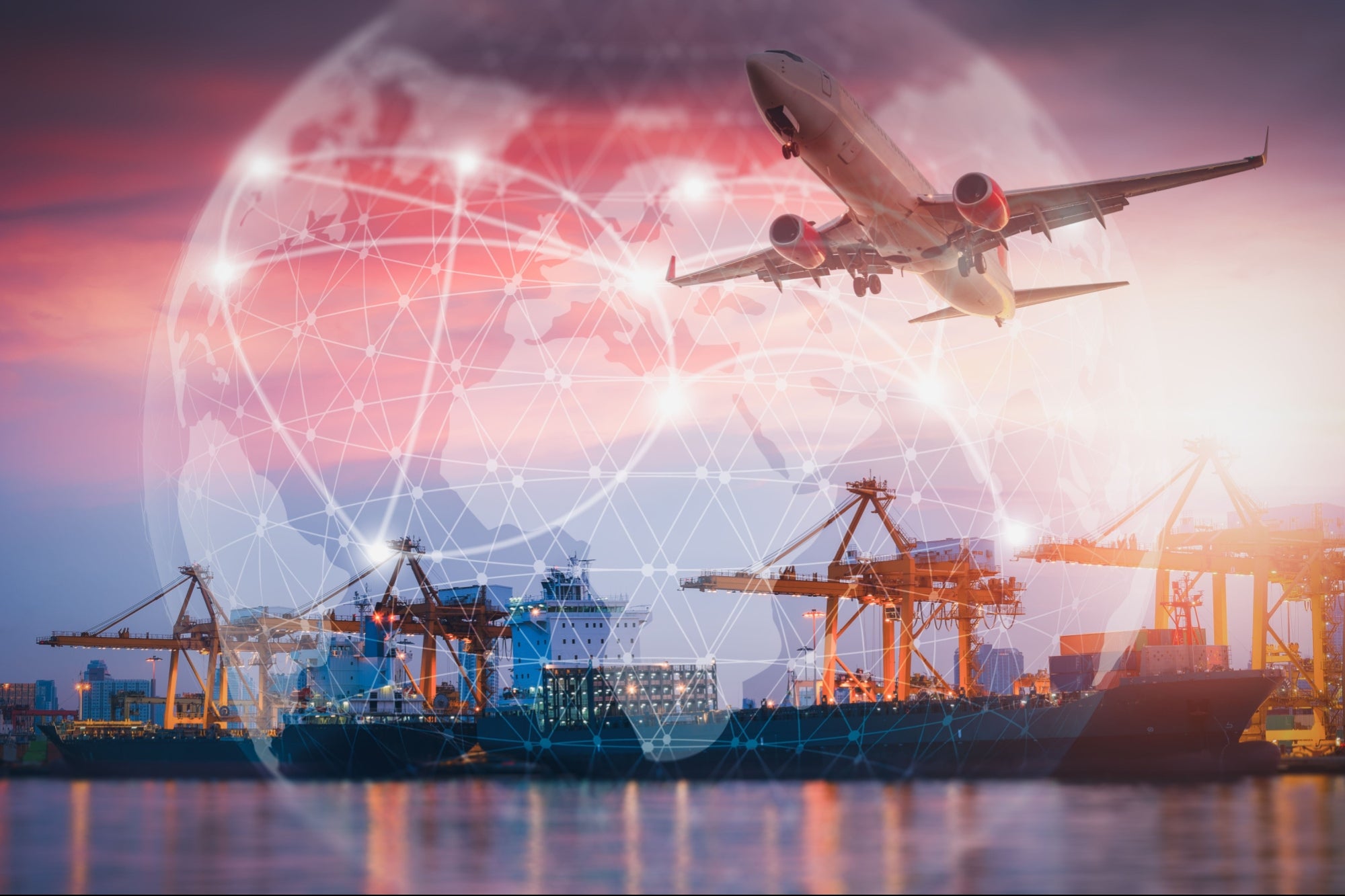
International trade is a fundamental component of the global economy, facilitating the exchange of goods and services across borders. It has been a key driver of economic growth, cultural exchange, and globalization. Whether it’s the import of exotic fruits from distant lands or the export of cutting-edge technologies to new markets, international trade plays a pivotal role in shaping our world.
In this article, we explore 20 interesting facts about international trade that highlight its significance and impact on various aspects of society. From ancient trade routes to modern supply chains, these facts provide a glimpse into the fascinating world of global commerce. So, let’s embark on this journey and uncover some intriguing insights about the ever-evolving realm of international trade.
Key Takeaways:
- International trade has been happening for a really long time, and it’s still growing today, connecting countries and boosting their economies.
- Trade between countries can create jobs, promote cultural understanding, and even help protect the environment, but trade imbalances and barriers can cause problems.
International trade has been around for thousands of years.
Since ancient times, civilizations have been engaging in trade across borders, exchanging goods and services to meet their needs and enhance economic growth.
The value of global trade has been steadily increasing.
Over the years, international trade has experienced significant growth, with the total value of global trade reaching trillions of dollars annually.
The World Trade Organization (WTO) ensures fair trade practices.
The WTO plays a crucial role in facilitating international trade by promoting fair and transparent trading practices among member countries.
The United States is the world’s largest importer and exporter.
The U.S. has a strong presence in the international trade arena, both as a major importer of goods and as a leading exporter of various products.
Globalization has significantly impacted international trade.
The interconnectedness of economies and advancements in technology have fueled globalization, leading to increased trade flows between countries.
Free trade agreements promote trade between nations.
Countries often enter into free trade agreements to eliminate barriers and tariffs, thus encouraging the smooth flow of goods and services across borders.
China is the world’s largest exporter.
China’s manufacturing prowess has made it the top exporter in the world, supplying a wide range of products to countries across the globe.
International trade creates jobs and boosts economic growth.
By opening up markets and creating opportunities for businesses, international trade contributes to job creation and overall economic prosperity.
The trade deficit is a measure of a country’s imports exceeding its exports.
A trade deficit occurs when a country imports more goods and services than it exports, leading to a negative balance of trade.
The concept of comparative advantage drives international trade.
Countries engage in trade based on their ability to produce certain goods more efficiently and at a lower cost compared to other nations.
E-commerce has revolutionized international trade.
The rise of online platforms and e-commerce has opened up new channels for businesses to engage in international trade, overcoming geographical limitations.
International trade can lead to cultural exchange and understanding.
Through trade, countries have the opportunity to share their customs, traditions, and values, fostering cultural understanding and appreciation.
Intellectual property rights are important in international trade.
Protecting intellectual property rights ensures that innovation and creativity are rewarded, encouraging businesses to invest in research and development.
International trade can contribute to sustainable development.
By encouraging the exchange of environmentally friendly technologies and promoting responsible business practices, international trade can support sustainable development goals.
Trade barriers, such as tariffs and quotas, can restrict international trade.
Imposing trade barriers can hinder the free flow of goods and inhibit economic growth, leading to higher prices for consumers.
Trade wars can have significant consequences on global economies.
When countries engage in retaliatory trade measures, it can disrupt supply chains, increase prices, and dampen economic growth on a global scale.
Trade imbalances can create economic challenges.
When there is a significant disparity between a country’s imports and exports, it can lead to trade imbalances and potential economic instability.
International trade helps to diversify economies.
By participating in global trade, countries can expand their range of industries and products, reducing dependence on a single sector.
Services make up a significant portion of international trade.
While goods are often the focus of trade discussions, services such as tourism, finance, and telecommunications also play a vital role in international trade.
International trade fosters diplomatic relationships.
Trade can serve as a platform for building diplomatic ties and promoting cooperation between nations, leading to more peaceful and prosperous relationships.
Conclusion
In conclusion, international trade is a fascinating and complex aspect of the global economy. It plays a crucial role in connecting nations, promoting economic growth, and improving the standard of living for people around the world. From the origins of trade in ancient civilizations to the modern-day global supply chains, international trade has evolved and adapted to the changing needs and demands of societies.
Understanding the various aspects and dynamics of international trade is essential for businesses, governments, and individuals alike. It helps to shape economic policies, drive innovation, and foster international cooperation. By exploring the facts and figures surrounding international trade, we can gain a deeper appreciation for its significance and impact on our everyday lives.
FAQs
1. What is international trade?
International trade refers to the exchange of goods, services, and capital between countries. It involves the import and export of goods, foreign investments, and international financial transactions.
2. Why is international trade important?
International trade is important as it allows countries to specialize in the production of goods and services in which they have a comparative advantage. It promotes economic growth, provides access to a wider variety of goods, and encourages efficiency and innovation.
3. How do countries benefit from international trade?
Countries benefit from international trade by gaining access to goods and resources that are not available domestically. It allows for the exchange of surplus products, fosters competition, stimulates economic growth, and creates employment opportunities.
4. What are the barriers to international trade?
Barriers to international trade include tariffs, quotas, trade embargoes, and regulatory restrictions. These barriers can hinder the flow of goods and services between countries and can have a negative impact on trade relationships and economic growth.
5. How does international trade impact the global economy?
International trade has a significant impact on the global economy by contributing to GDP growth, promoting technological advancements, facilitating foreign direct investments, and creating opportunities for economic development and poverty reduction.
6. Are there any risks associated with international trade?
Yes, there are risks associated with international trade, such as fluctuations in exchange rates, political instability, trade disputes, and economic downturns. However, these risks can be managed through proper risk assessment, diversification, and sound trade policies.
7. How has international trade evolved over time?
International trade has evolved from simple barter systems in ancient times to complex global supply chains and digital commerce in the modern era. Technological advancements, improvements in transportation, and the creation of trade agreements have all contributed to the evolution of international trade.
8. What are some notable examples of international trade agreements?
Some notable examples of international trade agreements include the World Trade Organization (WTO), North American Free Trade Agreement (NAFTA), European Union (EU), and the Trans-Pacific Partnership (TPP). These agreements aim to promote free trade, reduce trade barriers, and regulate international commerce.
9. How does international trade affect consumers?
International trade benefits consumers by providing a wider variety of goods at competitive prices. It allows consumers to access products from different countries, increases consumer choices, and promotes innovation and product quality.
10. How can businesses engage in international trade?
Businesses can engage in international trade by researching foreign markets, establishing partnerships or subsidiaries abroad, complying with import and export regulations, and adapting their products or services to meet the needs of international consumers.
International trade's fascinating facts merely scratch the surface of this complex, interconnected world. Jaffna's bustling trade fair showcases Sri Lanka's vibrant commerce scene, while mind-blowing global trade patterns reveal the intricate web of economic relationships spanning continents. Closer to home, Laredo, Texas, exemplifies how urban development and international trade intertwine, shaping the lives of communities on both sides of the border. Explore these captivating stories to gain a deeper understanding of the forces that drive our economies and shape our world.
Was this page helpful?
Our commitment to delivering trustworthy and engaging content is at the heart of what we do. Each fact on our site is contributed by real users like you, bringing a wealth of diverse insights and information. To ensure the highest standards of accuracy and reliability, our dedicated editors meticulously review each submission. This process guarantees that the facts we share are not only fascinating but also credible. Trust in our commitment to quality and authenticity as you explore and learn with us.


